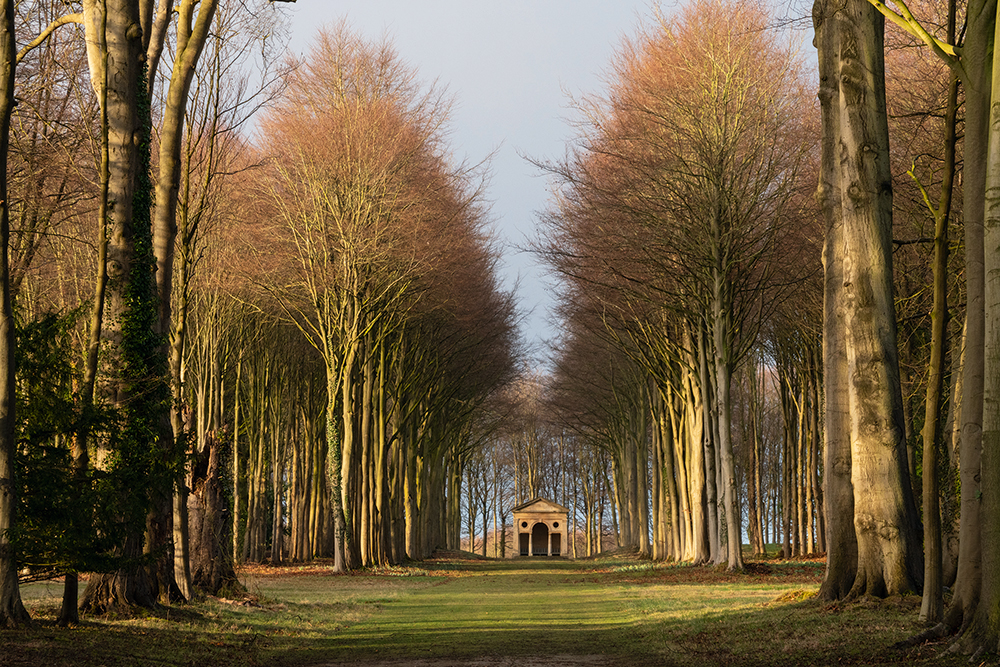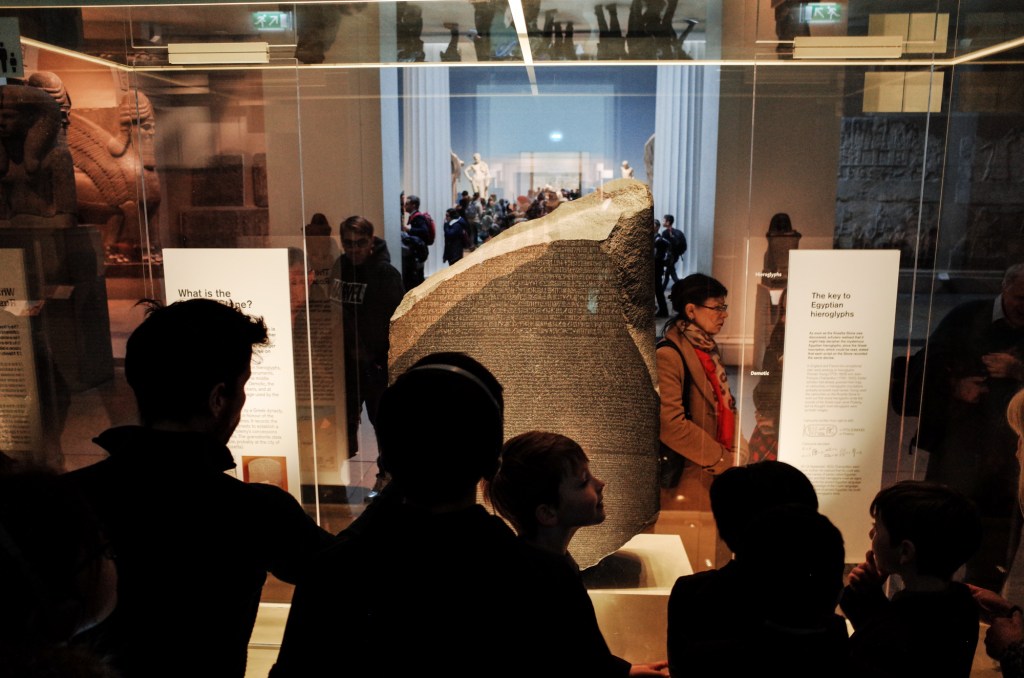
This year marks the centenary of Britain’s National Pinetum at Bedgebury in Kent, originally founded to rescue the smog-ravaged collection of the Royal Botanic Gardens, Kew, and now part of a global conservation effort: one third of all conifer species are currently threatened with extinction. To celebrate the birthday, we have Bedgebury Florilegium by Christina Harrison and Dan Luscombe (Kew Publishing, £18), featuring 20 botanical paintings by Bedgebury’s Florilegium Society. This is a group of volunteer artists dedicated to documenting the Pinetum’s remarkable collection of more than 12,000 specimen trees.
But perhaps the most beautiful book to cross my desk this year is Melbourne Hall Garden by Jodie Jones (Frances Lincoln, £35), hauntingly photographed by Andrea Jones. Through her lens, the subtlety and charm of this unique garden in Derbyshire – a vanishingly rare survival of an early 18th-century Anglo-French formal plan – are sensitively revealed. Together, the Joneses show just how off-kilter our ideas of formal gardens have become, conditioned by the chilly engravings of Kip and Knyff or the overweening grandeur of Louis XIV’s Versailles. Instead of vainglorious bombast and rigid regularity, we see light and shadow, simplicity and serenity, texture, warmth and wit.
Jodie is a marvellous writer, lucid and engaging, whose deep dives into the massive Melbourne Hall archive prove full of treasures. Most garden historians have always believed Melbourne Hall to be the work of George London, half of a dynamic duo (London & Wise) that had a virtual monopoly of upper crust gardening at the turn of the 18th century. But Jones argues convincingly that the garden design was in fact the work of the owner, Thomas Coke, who merely consulted London on the plan before spending a fortune at his nursery. (One plant bill alone exceeds £86,000 in today’s money.)
Kept in London by his responsibilities as vice chamberlain at the court of Queen Anne, Coke entrusted much of the work to his redoubtable sister Betsy, who also had charge of his two little girls. Equally skilled at multitasking is the current chatelaine of Melbourne Hall, who has brought up six children alongside remodelling the garden with a bold and painterly eye. The last few chapters describe her innovations, both in revisiting the garden’s trees and introducing colourful perennial borders.
‘Every great garden is ephemeral,’ writes Jones, and it is a wonder that this one survived, as a new gardening sensibility embraced the ‘evocations of idealised English landscape’ created by Capability Brown, and old-fashioned formal gardens were swept away. As she points out: ‘The natural topography at Melbourne Hall could, in fact, have lent itself extremely well to this treatment, but, thanks to the benign indifference of subsequent owners, the perfect formality of the established garden was left intact.’
The gardens that replaced the likes of Melbourne Hall are precisely those celebrated in another sumptuous book from the same publisher, Tim Richardson’s The English Landscape Garden: Dreaming of Arcadia, with photographs by Clive Boursnell (Frances Lincoln, £40), which claims, astonishingly, to be the first ever large-format book to be published on the 18th-century landscape garden. It covers 20 important gardens, ranging from the Italianate waterworks and mighty beech corridors of Bramham Park, through the limpid landscapes of Lancelot Brown, to the thrills and spills of picturesque Hackfall, Hawkstone and Hafod, all rocks and crags and raging torrents.
Masterworks such as Rousham and Stourhead are experienced as ‘akin to a massive walk-though art installation’; indeed the sublime beauty of Studley Royal moves the generally urbane and witty Richardson to breathlessness, as he is ‘held in suspension, caught between worlds, between life and death, between time and no time’. More often, though, we enjoy his vivid and incisive commentary (he is expert at unravelling the messages embodied in these gardens), to which he adds some contentious theories – suggesting, for instance, that the landscape at Blenheim is based on the Duke of Marlborough’s battle plan.
For many of us, however, the lure of garden visiting lies not so much in the gardens themselves, or even homemade cake, as in the opportunity to snoop around other people’s houses and lives. All the better if they are famous. This is the impetus behind Victoria Summerley’s The Secret Gardeners, with photographs by Hugo Ritson Thomas (Frances Lincoln, £35), back this year in an expanded edition featuring the gardens of four new celebs. Some are decidedly lacklustre. But who knew that Jeremy Clarkson had a penchant for lavender? Or that Dominic West dug his own swimming pond? If this is the kind of detail that fascinates you, then this is the Christmas book for you.
There’s a theory that the landscape at Blenheim was based on the Duke of Marlborough’s battle plan
On a more practical note, there have been a host of books published on ‘mindful’, ‘waterwise’ and ‘climate-resilient’ gardening. Marion Boswall brings these themes together in The Kindest Garden: A Practical Guide to Regenerative Gardening (Frances Lincoln, £25). The subtitle, she insists, is not a ‘method’ but a ‘mindset’, uniting insights from regenerative agriculture, organic and biodynamic gardening and permaculture. Some of this is ancient knowledge; some she styles, without apology, as ‘quasi-science’. And while we may not all rush to examine our soil through a microscope or puddle a pond with a herd of cows, there is some useful practical advice, especially on soil improvement, compost-making and compost teas.
Gardeners uneasy at the notion of ‘energetic listening’, or using dowsing rods to site their compost heap, will be infinitely more comfortable with Mary Keen’s Diary of Keen Gardener (John Murray, £20), a deeply personal account of a year in her own beloved Cotswold garden: ‘A patchwork of thoughts and tasks and life, from past and present.’ Despite her international reputation as a garden designer, design is not, Keen insists, what gardens are about. ‘It’s the daily watchfulness, the constant commitment, that creates a garden.’
She describes herself as ‘a critical old-fashioned gardener’, yet works diligently to acquaint herself with all the latest horticultural fads (not least regenerative gardening). Much of this she embraces, though she is reluctant to give up on ‘lots and lots of flowers’, and is dismayed to learn that ‘no dig’ vegetable growing is ‘so 2015’.
She describes an early mentor as ‘rather terrifying in an English country lady sort of way’ – which might be an apt description of Lady Mary herself. She has made gardens everywhere, from California to Corfu, and for the grandest of clients. Her daughters bathe in Dominic West’s ‘pool of pools’. All horticulture’s great and good appear to be bosom friends (indeed the constant name-dropping – Christian names only – can feel alienating to lesser mortals). Yet the gardener who emerges from these pages – no surprise to Spectator readers – is perceptive, wry, open-minded, endlessly curious and warmly alive to the everyday joys afforded by her own small patch. A year spent in her company is both an education and a delight. ‘Most days,’ she writes simply, ‘I learn something new about plants.’ And so do we.







Comments